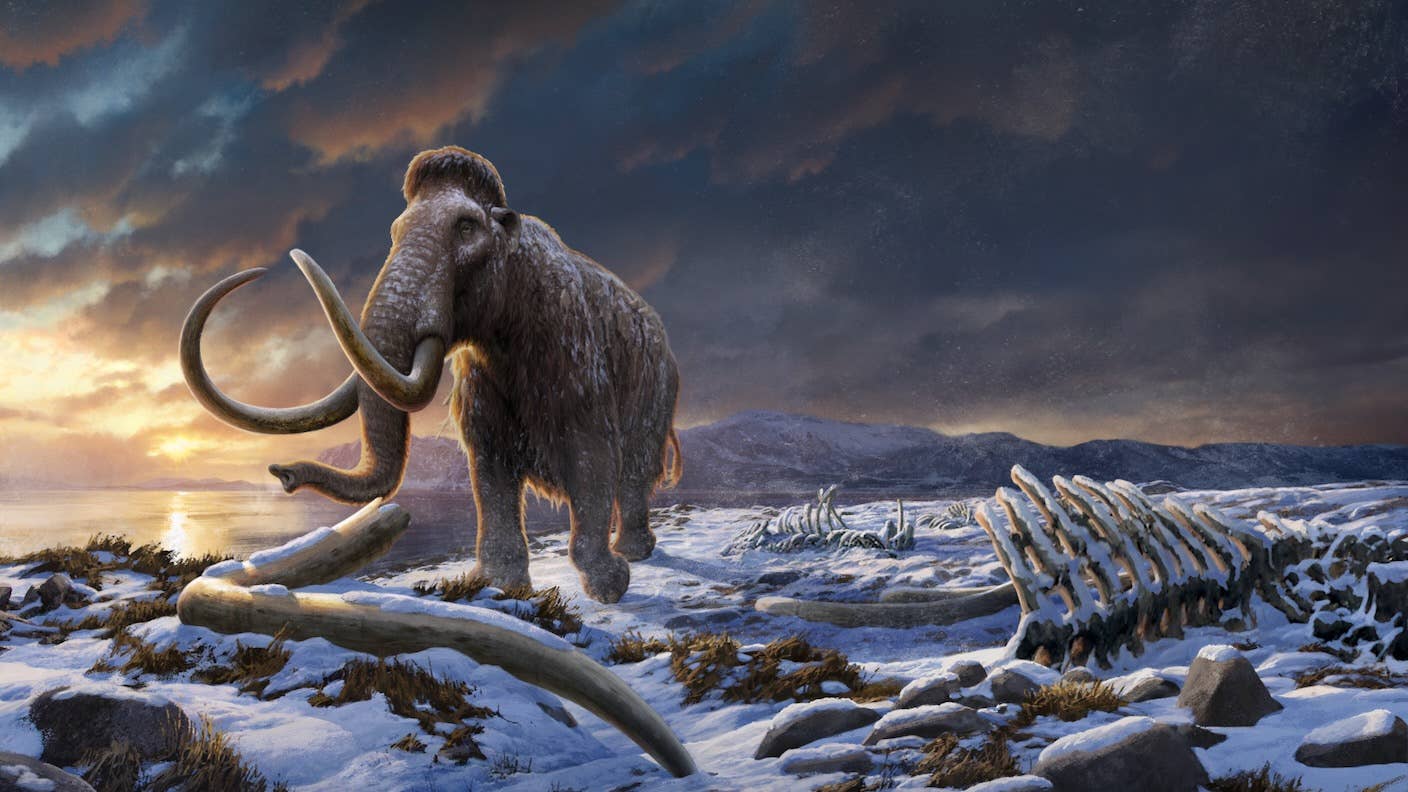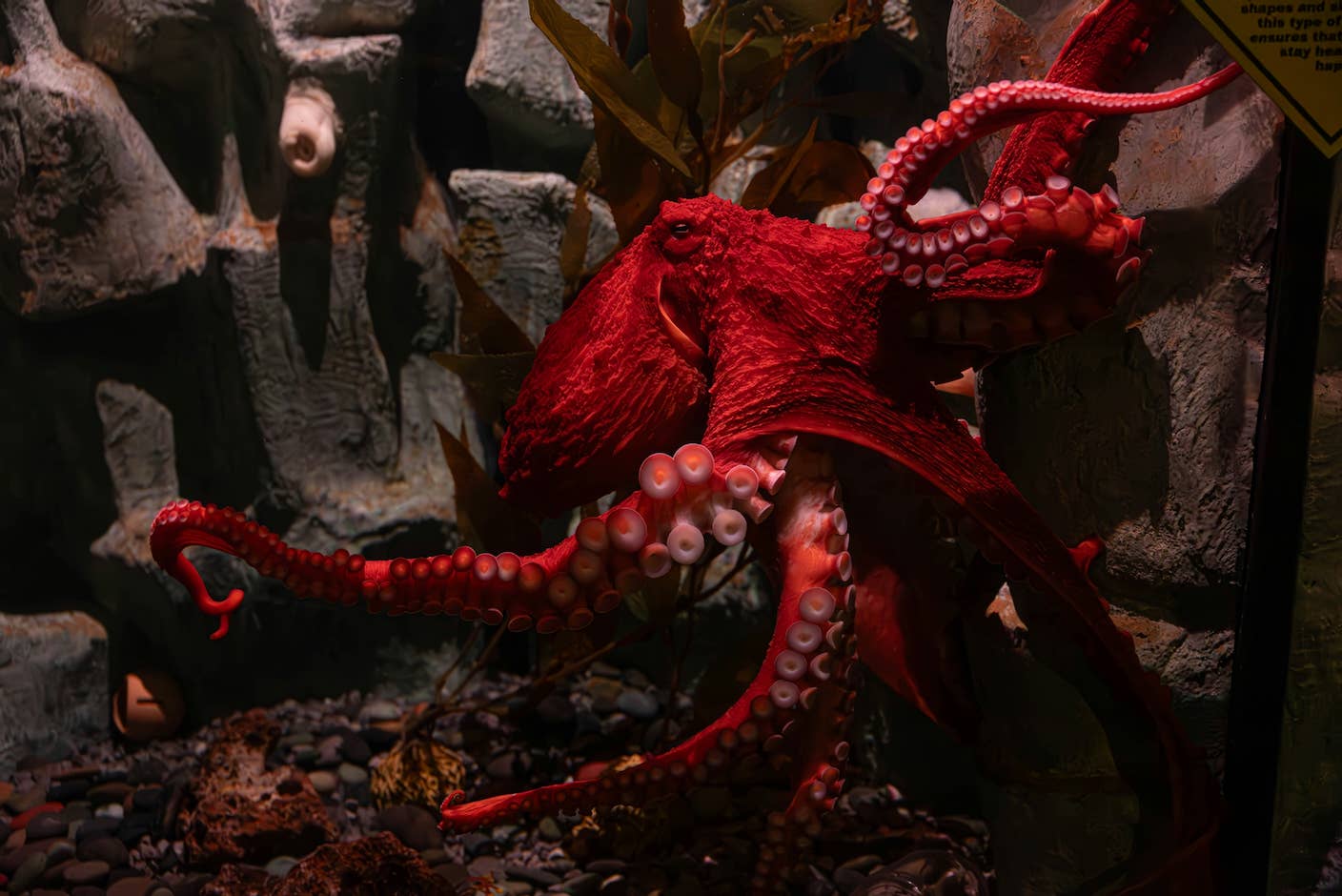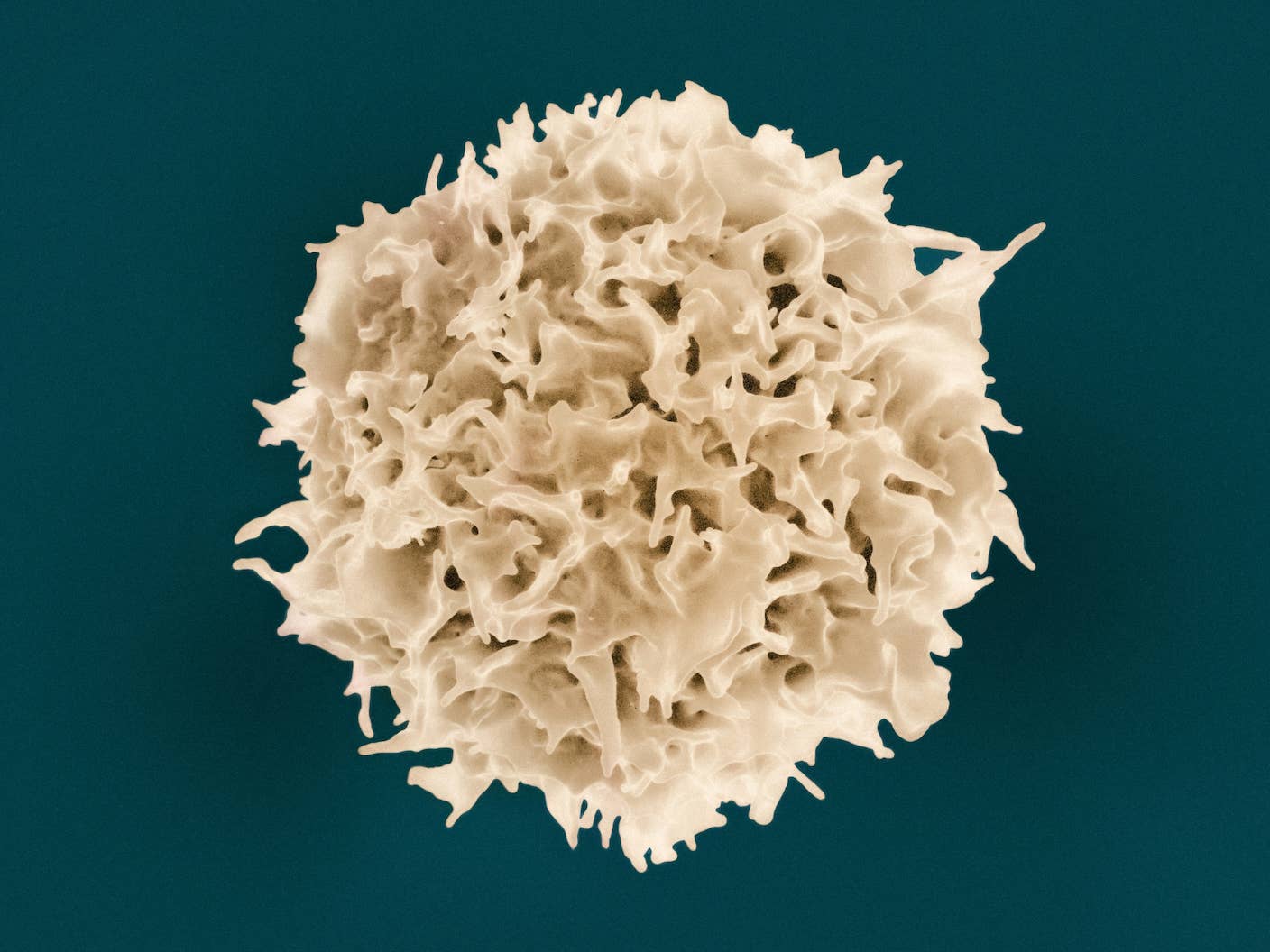First Woolly Mammoth Genome Reconstructed in 3D Could Help Bring the Species Back to Life

Share
Roughly 52,000 years ago, a woolly mammoth died in the Siberian tundra. As her body flash froze in the biting cold, something remarkable happened: Her DNA turned into a fossil. It wasn’t only genetic letters that were memorialized—the cold preserved their intricate structure too.
Fast forward to 2018, when an international expedition to the area found her preserved body. The team took little bits of skin from her head and ear, hairs still intact.
From these samples, scientists built a three-dimensional reconstruction of a woolly mammoth’s genome down to the nanometer. The results were published in Cell today.
Like humans, the mammoth’s DNA strands are tightly packed into chromosomes inside cells. These sophisticated structures are hard to analyze in detail, even for humans, but they contain insights into which genes are turned on or off and how they're organized in different cell types.
Previous attempts to reconstruct ancient DNA only had tiny snippets of genetic sequences. Like trying to put together a puzzle with missing pieces, the resulting DNA maps were incomplete.
Thanks to the newly discovered flash-frozen DNA, this mammoth project—pun intended—is the first to assemble an enormous ancient genome in 3D.
“This is a new type of fossil, and its scale dwarfs that of individual ancient DNA fragments—a million times more sequence,” said study author Erez Lieberman Aiden at Baylor College of Medicine in a statement.
Aiden’s team heavily collaborated with Love Dalén at the Center of Palaeogenetics in Sweden. In a separate study, Dalén’s team analyzed 21 Siberian woolly mammoth genomes and charted how the species survived for six millennia after a potentially catastrophic genetic “bottleneck.”
The mammoth genomes weren’t that different than those of today’s Asian and African elephants. All have 28 pairs of chromosomes, and their X chromosomes twist into unique structures unlike most mammals. Digging deeper, the team found genes that were turned on or off in the mammoth compared to its elephant cousins.
“Our analyses uncover new biology,” wrote Aiden’s team in their paper.
DNA Serendipity
Ancient DNA is hard to come by, but it offers invaluable clues about the evolutionary past. In the 1980s, scientists eager to probe genetic history showed ancient DNA, however fragmented, could be extracted and sequenced in samples from an extinct member of the horse family and Egyptian mummies.
Thanks to modern DNA sequencing, the study of ancient DNA “has subsequently undergone a remarkable expansion,” wrote Aiden’s team. It’s now possible to sequence whole genomes from extinct humans, animals, plants, and even pathogens spanning a million years.
Making sense of the fragments is another matter. One way to decipher ancient genetic codes is to compare them to the genomes of their closest living cousins, such as woolly mammoths and elephants. This way, scientists can figure out which parts of the DNA sequence remained unchanged and where evolution swapped letters or small fragments.
These analyses can link genetic changes to function, such as identifying which genes made mammoths woolly. But they can’t capture large-scale differences at the chromosomal level. Because DNA relies on the chromosome’s 3D structure to function, sequencing its letters alone misses valuable information, such as when and where genes are turned on or off.
Chromosome Puzzle Master
Enter Hi-C. Developed in 2009 to reconstruct human genomes, the technique detects interactions between different genetic sites inside the cell’s nucleus.
Here’s roughly how it works. DNA strands are like ribbons that twirl around proteins in a structure resembling beads on a string. Because of this arrangement, different parts of the DNA strand are closer to each other in physical space. Hi-C “glues” together sections that are near one another and tags the pairs. Alongside modern DNA sequencing, the technique produces a catalog of DNA fragments that interact in physical space. Like a 3D puzzle, scientists can then put the pieces back together.
“Imagine you have a puzzle that has three billion pieces, but you don't have the picture of the final puzzle to work from,” study author Marc A. Marti-Renom said in the press release. “Hi-C allows you to have an approximation of that picture before you start putting the puzzle pieces together.”
But Hi-C can be impossible to use in ancient samples because the surviving fragments are so short they’ve erased any chromosome shapes. They’ve literally withered away over time.
Be Part of the Future
Sign up to receive top stories about groundbreaking technologies and visionary thinkers from SingularityHub.


In the new study, the team developed a new technique, called PaleoHi-C, to analyze ancient DNA specifically.
Scientists immediately treated samples in the field to reduce contamination. They generated roughly 4.4 billion “pairs” of physically aligned DNA sequences—some interacting within a single chromosome, others between two. Overall, they painted a 3D snapshot of the woolly mammoth’s genetic material and how it looked inside cells with nanoscale detail.
In the new reconstructions, the team identified chromosome territories—certain chromosomes are located in different regions of the nucleus—alongside other quirks, such as loops that bring pairs of distant genomic sites into close physical proximity to alter gene expression. These patterns differed between cell types, suggesting it’s possible to learn which genes are active, not just for the mammoth but also compared to its closest living relative, the Asian elephant.
Roughly 820 genes differed between the two, with 425 active in the mammoth but not in elephants, and a similar number inactivated in one but not the other. One inactive mammoth gene that’s active in elephants has a human variant that is also shut down in the Nunavik Inuit, an indigenous people who thrive in the arctic. The gene “may be relevant for adaptation to a cold environment,” wrote the team.
Another inactive gene may explain how the woolly mammoth got its name. In humans and sheep, shutting down the same gene can result in excessive hair or wool growth.
“For the first time, we have a woolly mammoth tissue for which we know roughly which genes were switched on and which genes were off,” said Marti-Renom in the release. “This is an extraordinary new type of data, and it’s the first measure of cell-specific gene activity of the genes in any ancient DNA sample.”
Crystalized DNA
How did the mammoth’s genome architecture remain so well preserved for over 50,000 years?
Dehydration, often used to preserve food, may have been key. Using Hi-C on fresh beef, beef after 96 hours sitting on a desk, or jerky after a year at room temperature, the jerky took the win for resiliency. Even after getting run over by a car, immersed in acid, and pulverized by a shotgun (no joke), the dehydrated beef’s genomic architecture remained intact.
Dehydration could also partly be why the mammoth sample lasted so long. A chemical process called “glass transition” is widely used to produce shelf-stable food such as tortilla chips and instant coffee. It prevents pathogens from taking over or breaking down food. The mammoth’s DNA may also have been preserved in a glassy state called “chromoglass.” In other words, the sample was preserved across millennia by being freeze-dried.
It's hard to say how long DNA architecture can survive as chromoglass, but the authors estimate it’s likely over two million years. Whether PaleoHi-C can work on hot-air-dried specimens, such as ancient Egyptian samples, remains to be seen.
As for mammoths, the next step is to examine gene expression patterns in other tissues and compare them to Asian elephants. Besides building an evolutionary throughline, the efforts could also guide ongoing studies looking to revive some version of the majestic animals.
“These results have obvious consequences for contemporary efforts aimed at woolly mammoth de-extinction,” said study author Thomas Gilbert at the University of Copenhagen in the release.
Image Credit: Beth Zaiken
Dr. Shelly Xuelai Fan is a neuroscientist-turned-science-writer. She's fascinated with research about the brain, AI, longevity, biotech, and especially their intersection. As a digital nomad, she enjoys exploring new cultures, local foods, and the great outdoors.
Related Articles

AI-Designed Antibodies Are Racing Toward Clinical Trials

Sci-Fi Cloaking Technology Takes a Step Closer to Reality With Synthetic Skin Like an Octopus

Aging Weakens Immunity. An mRNA Shot Turned Back the Clock in Mice.
What we’re reading